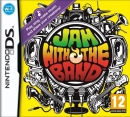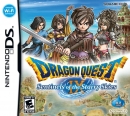| MrBubbles said: Grand finale of our three-part series analyzing the advantages of each system coming up. In case you missed it, here’s what Sony has done great and here’s what Microsoft has done brilliantly. Here are the six reasons Nintendo is the industry leader at the moment, and wiping the floor with Sony and Microsoft. 1. Great Marketing StrategyWithout a doubt, Nintendo’s marketing team has done the best work of the three companies. Unlike the darker Xbox 360 or PS3 commercials, Nintendo’s advertisements are light-hearted, happy things that are instantly recognizable and very memorable. After all, who doesn’t remember smiling at the Japanese man saying “We would like to play”? 2. Control of the Supply and DemandThis hasn’t been a great strategy for consumers, but since it was a brilliant business move by Nintendo, it deserves to be on this list. Although it has never been confirmed, there have been many, many reports that Nintendo has been restricting the supply of Wii’s in order to keep demand for the consoles up. Knowing that these things are a hot commodity, you’re much more likely to grab the first Wii you see on a shelf than you would if they were available everywhere.
3. Appeal to a Wide Userbase (AKA Focus on Casuals)Another controversial move by Nintendo this generation was their decision to pretty much shun the hardcore and focus instead on the casual market. This may have turned many of the hardcore away from the Wii but their place (and ten places behind them) was filled with casual, first-time gamers who were looking for a way to jump into the gaming market. And Nintendo provided it to them. 4. Pricing StructureNintendo may not have the cheapest console at the moment, but for over two years it did. This, along with its casual focus, made it the most wanted console for the average consumer. Normal people don’t want to spend hundreds of dollars on video game consoles, which is why, historically, most console sales take place after the console has dropped to $199 or less. Nintendo really capitalized on a lot of sales by starting off their console very close to that price. 5. Loyal FanbaseNintendo is one of the strongest brands in the world. In fact has become the “Kleenex” of gaming. Let me explain: you have probably heard non-gamers refer to their video game console as “a Nintendo” even when you clearly see that it’s a PS2. They call it a Nintendo because that’s what they or their parents grew up with and that type of childhood memory is hard to reverse. Because of situations like these, Nintendo has the biggest, most loyal, and oldest fanbase of any of the three consoles. That kind of root support almost gives Nintendo the Midas touch: anything they touch turns to gold. 6. Mascot CharactersThere’s no question: Mario is not only an icon for Nintendo, but he is also an icon for gaming in general. The character is associated with video games by millions around the globe and since he only appears on one console, which console do you think those people will choose? Microsoft has attempted to make a mascot out of Master Chief and has somewhat succeeded, but Master Chief is nowhere near the level of Mario and pals.
http://secondstorygamer.com/2009/01/reasons-nintendo-edge-over-sony-microsoft/ |
1. Proper marketing is very important. Too many people dismiss marketing as snake oil salesmen who con stupid poeple out of their money, but great products don't sell themselves.
2. Deliberately withholding supply is a bad strategy when selling a mass market product, you produce what you think you can sell; if Nintendo is under producing, it's because they didn't forsee how much demand there was (the N64 and GameCube didn't perform well so there was reason for doubt), or because they are physically unable to produce (Nintendo needs to get all its component producers to move in step, and that's a headache and a half). That being said, a bit of a shortage can certainly create an impression that you've got the hot thing.
3. Not really a shunning since Nintendo never made games to appeal to the kinds of gamers we now call "hardcore", but Nintendo has it's own core audience that it still makes games for. But I agree that Nintendo realized that "hardcore" gamers are a niche, and in order to be successful, you have to transend niches to reach the broad audience.
4. Having an affordable price is important, but people buy things because it has value, something they want; price is a barrier to entry, so lowering the price doesn't make it more attractive, it just makes it easier to buy. $250 is a fairly easy to swallow price, unless you're a kid. Also, by releasing a product unlike any previously seen console, Nintendo has broken down the normal value/cost ratio that other consoles like the 360 and PS3 have. This is why price cuts affect the HD consoles, it doesn't inspire one to buy an HD console, it just causes those who were going to buy one of them to choose which one; a price cut on the 360, causes PS3 owners to reconsider, and vice versa.
5. This kind of mixes the loyal fanbase with outsiders, the long time Nintendo fans love Mario and Zelda games and keep coming back, but this point talks about Nintendo as a more global brand amongst non-gamers, who call video games "Nintendo" like a generic term. Does it help Nintendo? Maybe, but sometimes those non-gamers have associated Nintendo with the negative aspects of video gaming, which goes back to #1 and Nintendo's attempts to rebrand itself.
6. A different take on 5, mascots are useful tools in establishing brands.
Of these, I think #1 and #3 are the most important.
Veder Juda is hand crafted from EPIC FAIL, and is a 96% certified Looney; the other 4% is a work in progress.




















